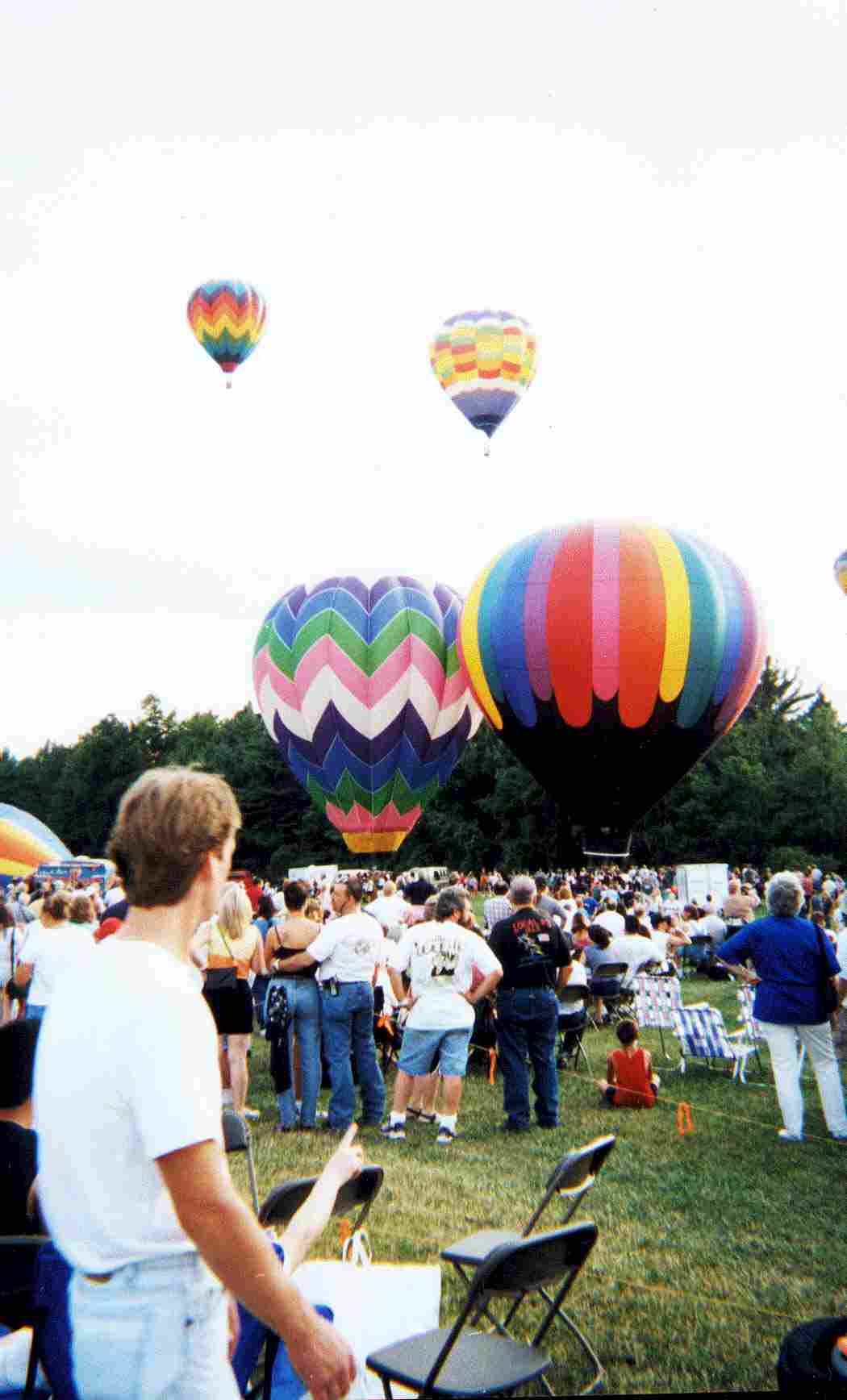
Free Expression
A Breath of Hot Air
In parts of Burgundy in summer, balloons are as common as the family car. In village after village along the highway, they bob, inflated, ready to hand, tethered to the garage. Their vivid colors are a badge of honor of another stripe: The brothers Montgolfier were the first to achieve flight; in 1783, for Louis XVI, with farm animals. Jules Verne elaborated on these and other Voyages Extraordinaires a good half century before the brothers Wright. It took another half century for naval designer Ed Yost to perfect the tapered bulb design and propane burners.

Illustration by Georges Roux for Jules
Verne novel, Voyages Extraordinaires.
In the John Casey story, "Connaissance des Arts,"* a snobbish young professor at a small town Midwestern university sheds tweeds, inhibition, reason as he races through cornfields and over bridges in pursuit of a guileless, air-headed student in a runaway balloon. By the time she touches down, he is hopelessly borne away.
The physics of balloons are as simple as love: Lighter than air, you are buoyant. Archemedes figured that out. Air weighs about 28 grams per cubic foot (heaviest at ground level where it must support the weight of all above). Heat it to 100 degrees F and you reduce the weight by 25%. (Consider that multiple: Balloons have to be huge to achieve lift-off in 7-gram increments.) Equalize the inner and outer pressure, while reducing inner density, and you belong to the wind, not in it, but of it; no gust rushing about the face, no breeze through the hair, perfectly calm.
A sigh went through the crowd of two thousand as the first of a dozen balloons lifted off at the Third Annual Great Northern Catskill Balloon Festival and Air Show on Saturday, August 18. Organized by the Greene County Chamber of Commerce, and staged on the grounds of the Balsam Shade Resort in Greenville, basket riders paid $175 to join the wind. Other sports earned money for charity in the festival dunking booth.


-- MH
*Contained in Testimony and Demeanor, pp. 53-150 (Knopf, 1979).